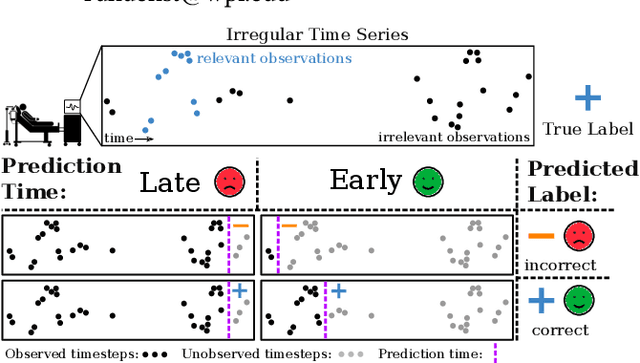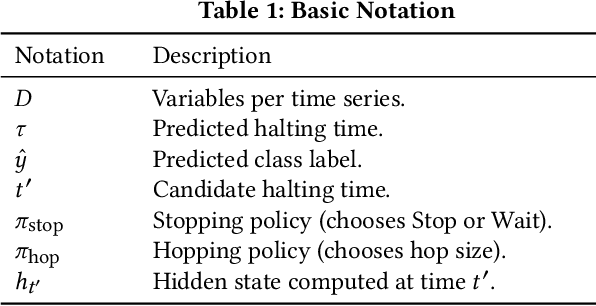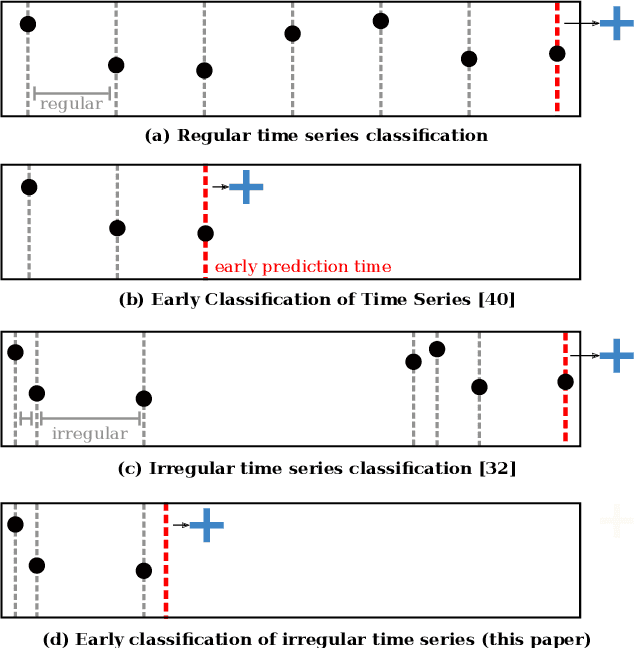Jidapa Thadajarassiri
Finding Short Signals in Long Irregular Time Series with Continuous-Time Attention Policy Networks
Feb 08, 2023Abstract:Irregularly-sampled time series (ITS) are native to high-impact domains like healthcare, where measurements are collected over time at uneven intervals. However, for many classification problems, only small portions of long time series are often relevant to the class label. In this case, existing ITS models often fail to classify long series since they rely on careful imputation, which easily over- or under-samples the relevant regions. Using this insight, we then propose CAT, a model that classifies multivariate ITS by explicitly seeking highly-relevant portions of an input series' timeline. CAT achieves this by integrating three components: (1) A Moment Network learns to seek relevant moments in an ITS's continuous timeline using reinforcement learning. (2) A Receptor Network models the temporal dynamics of both observations and their timing localized around predicted moments. (3) A recurrent Transition Model models the sequence of transitions between these moments, cultivating a representation with which the series is classified. Using synthetic and real data, we find that CAT outperforms ten state-of-the-art methods by finding short signals in long irregular time series.
Stop&Hop: Early Classification of Irregular Time Series
Aug 21, 2022



Abstract:Early classification algorithms help users react faster to their machine learning model's predictions. Early warning systems in hospitals, for example, let clinicians improve their patients' outcomes by accurately predicting infections. While early classification systems are advancing rapidly, a major gap remains: existing systems do not consider irregular time series, which have uneven and often-long gaps between their observations. Such series are notoriously pervasive in impactful domains like healthcare. We bridge this gap and study early classification of irregular time series, a new setting for early classifiers that opens doors to more real-world problems. Our solution, Stop&Hop, uses a continuous-time recurrent network to model ongoing irregular time series in real time, while an irregularity-aware halting policy, trained with reinforcement learning, predicts when to stop and classify the streaming series. By taking real-valued step sizes, the halting policy flexibly decides exactly when to stop ongoing series in real time. This way, Stop&Hop seamlessly integrates information contained in the timing of observations, a new and vital source for early classification in this setting, with the time series values to provide early classifications for irregular time series. Using four synthetic and three real-world datasets, we demonstrate that Stop&Hop consistently makes earlier and more-accurate predictions than state-of-the-art alternatives adapted to this new problem. Our code is publicly available at https://github.com/thartvigsen/StopAndHop.
 Add to Chrome
Add to Chrome Add to Firefox
Add to Firefox Add to Edge
Add to Edge